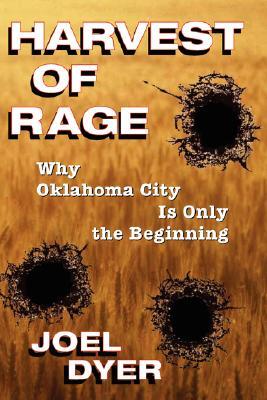Maybe in another decade or so we will be ready to assess the full political and psychological impact of the 1995 bombing of the federal building in Oklahoma City, but already we can observe some of the major effects. The partisan impact became clear last year, when Bill Clinton’s reelection owed so much to the radical shift in the public mood caused by the act: overnight, the torrent of media hostility and suspicion directed against the White House became associated with extremism, conspiracy thinking, and violence. The bombing also reversed American attitudes on domestic terrorism and political violence. After blithely ignoring for 30 years frequent acts of domestic terrorism by various political and ethnic groups, the American media suddenly decided that Oklahoma City was just the tip of a very large iceberg, and 1995 witnessed what we can in retrospect term the Great Militia Panic. Capitalizing on transformed public sentiment, federal agencies have spent the last two years engaged in the tactics of infiltration and provocation which they so regularly used against the left in the 1960’s and 70’s, with painfully predictable results. Every few months now, we hear astonishing claims that the FBI has once again saved us from the savage onslaught of some militia band—only to learn later that the sole suggestions of violence stemmed from Bureau provocateurs themselves.
Harvest of Rage reflects something of the Militia Panic, in that Joel Dyer sees the attack on the Murrah building as a portent of a cataclysmic revolutionary breakdown: “The bomb’s fuse had been lit somewhere in the economically devastated landscape of rural America . . . the people who live in the nation’s hinterland have finally reached the edge of the abyss. The fertilizer and diesel fuel that once enriched the soil and powered the machines that plant and harvest will now be used to destroy their perceived enemies, primary among them, the federal government.” Throughout this book we must separate such hyperbole from the author’s underlying analysis of the social and political situation, which is thoughtful and significant. Even if Oklahoma City is the beginning of anything in particular (and that is far from certain), it is very difficult to link the perceived threat with the distinctive problems of rural America, and the structural economic failures collectively known as the farm crisis. Dyer has important things to say about the latter, but the connection to terrorism is tenuous. Readers attracted by the Oklahoma City subtitle will be disappointed; others who would profit from the book’s main argument may be put off by its emphasis on “terrorists.”
Joel Dyer is a Colorado-based journalist who has worked with community groups seeking to investigate the growing economic and psychic crises of rural America. He argues that these tensions have literally traumatized millions of citizens who have proceeded to respond to desperate circumstances in a series of once unthinkable ways, including suicide and domestic violence. Anomic country-dwellers are ready takers for a variety of conspiracy theories assuming overtly or covertly religious forms, deriving ultimately from familiar notions of the apocalyptic and presenting a lively cast of villains: international bankers and Jewish manipulators, the Beast of the Apocalypse and the Federal Reserve, black helicopters and Soviet tanks, the New World Order and the rise of Antichrist. Sometimes ideas are cemented together by a “Christian Identity” theology, linked to the right-wing anarchism of the Common Law movement. Very commonly, the political framework assumes the betrayal and perversion of the United States Constitution. So far, so good; the strongest parts of Harvest of Rage are undoubtedly the case-studies which Dyer presents of farmers and their families adopting some or all of this bizarre intellectual melange in order to make sense of the disasters wrought upon whole regions and states. Some are members of questionable groups like the Freemen and the Republic of Texas, while others are straightforward individuals. It is helpful to have their ideas explained by a sympathetic populist observer who does not automatically view conspiracy thought as the prerogative of the Nazi or the lunatic, and who sincerely respects the principles of the strict constitutionalist. In this sense, Harvest of Rage is a welcome corrective to far more hostile books on the “militia movement” by authors like Kenneth Stern and Morris Dees.
Problems do arise, however, from Dyer’s general thesis. First, I am far from certain that the apocalyptic cocktail here described is all that new in rural America. In the 1890’s, Midwestern farmers were preparing to defend themselves against the imminent armed onslaught of the Jesuits and the Knights of Columbus, and in the 1930’s their fears were wilder still. Second, Dyer asserts—rather than proves—that the attitudes and beliefs he describes have more resonance for rural Americans than for, say, suburbanites, many of whom respond to their fears by moving to the hinterland. Though the survivalist compounds may be in Idaho or Arkansas, they are often populated by uprooted city-dwellers from California or Michigan. Apocalyptic thinking is not necessarily a product of the farm crisis; and the degree of violence is unlikely to be decided by the shifting fortunes of rural America.
Yet Dyer’s book offers a heartfelt portrait of conditions in the American farmbelt and fingers the real culprits responsible for its woes: corporate agribusiness, the soulless mandarins of the Federal Reserve system, and the politicians who long ago gave up any pretense of trying to regulate them. If Oklahoma City serves to focus attention on these injustices, then some good may yet come of that disaster.
[Harvest of Rage: Why Oklahoma City is Only the Beginning, by Joel Dyer (Boulder: Westview Press) 304 pp., $24.00]

Leave a Reply